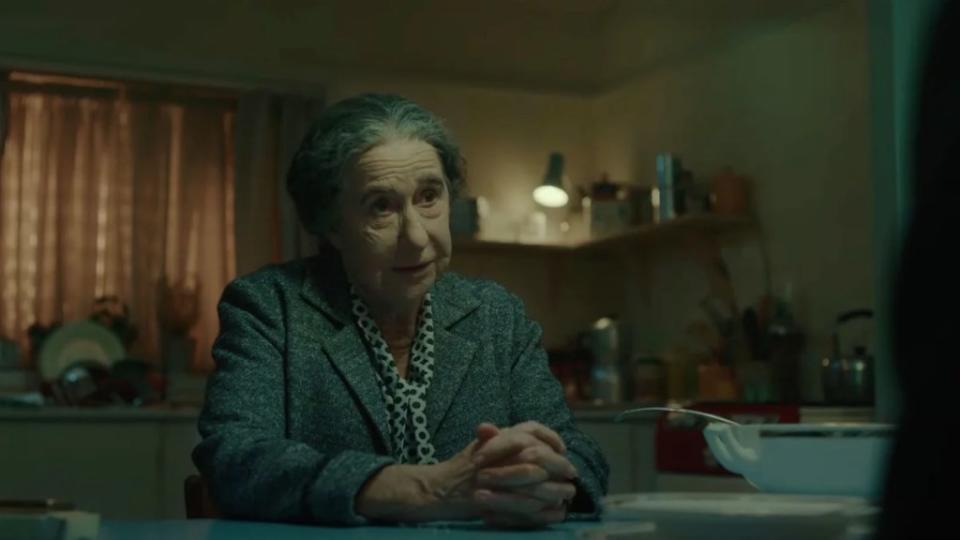Does a Makeup Makeover Increase Your Chances of Oscar Gold?
- Oops!Something went wrong.Please try again later.
- Oops!Something went wrong.Please try again later.
- Oops!Something went wrong.Please try again later.
At the 2003 Academy Awards, presenter Denzel Washington cheekily announced that ceremony’s Best Actress winner with a tiny but pointed, pun-fully-intended flourish: “By a nose…Nicole Kidman.” The joke was apt because to portray writer Virginia Woolf in “The Hours,” Kidman famously underwent three hours of prep and donned a prosthetic schnoz, sparking debate among Oscar enthusiasts over whether hours in the makeup chair in addition to a committed dramatic performance is the fast-track secret to picking up the trophy. So…is it?
Well, it sure doesn’t hurt, as evidenced by recent Oscar history. Just in the last two years, Jessica Chastain (“The Eyes of Tammy Faye”), Brendan Fraser (“The Whale”), Jamie Lee Curtis (“Everything Everywhere All at Once”) and even Will
Smith (“King Richard”) found themselves bounding to the podium via roles that required them to disappear inside often stretchy, handcrafted skin. Since the first competitive Academy Award for Best Makeup in 1981—the Makeup and Hairstyling moniker did not come until 2012—the common wisdom has been that the Academy favors movies with extreme transformation, often in science-fiction and horror pictures.
That is not untrue, given that the first makeup Oscar went to Rick Baker’s game-changing lycanthrope metamorphosis in 1981’s “An American Werewolf in London” and was followed by such films as “Bram Stoker’s Dracula,” “The Fly” and “The Wolfman.” The latter of those famously prompted presenter Cate Blanchett to quip live on air as the film clip ended, “Gross.”
However, a closer look unveils that the Makeup Oscar also sometimes goes to the “classiest” film of the bunch, even despite the presence of eye-popping prosthetics. Notable films that accomplished this are “Frida” (which bested “The Time Machine” in a rare two-film race), “La Vie en Rose” (which defeated the Eddie Murphy makeup fest “Norbit” and a “Pirates of the Caribbean” feature). One of the most amusing came when Mike Leigh’s modest “Mikado” origin story “Topsy-Turvy” beat the second “Austin Powers” film (yes, the one with Fat Bastard), Murphy (again) and Martin Lawrence in pounds of aging latex in “Life,” and Robin Williams buried in silvery robot garb in “Bicentennial Man.”
Often the category just happens to match the eventual Best Picture winner, with examples including “Amadeus,” “Driving Miss Daisy,” “The Lord of the Rings: The Return of the King” and “Braveheart.” And an even closer look unveils yet another trend of the films winning twin Oscars, one for the main actor and one for the makeup team. This happened for both Chastain and Fraser just in the last two ceremonies, with other famous examples including Meryl Streep in “The Iron Lady,” Martin Landau in “Ed Wood” and Gary Oldman in “Darkest Hour.” The first two examples are classic 2-for-2s, where the films won both Oscars they were nominated for, a feat also repeated by “The Eyes of Tammy Faye.”

So who’s going to use the makeup chair as a vehicle to get to the Dolby Theatre this year? The pickings are already out there. There’s Helen Mirren in “Golda” and Willem Dafoe in “Poor Things.” And, oh yeah, Bradley Cooper, sporting old-age makeup and a much-discussed prosthetic nose in his Leonard Bernstein biopic “Maestro.” It’s premature to label favorites at this point, but Oscar tradition could be honored if last season’s Best Actress winner Michelle Yeoh were to open an envelope on March 10 and utter the words, “By a nose…”
A version of this story first appeared in the Below-the-Line issue of TheWrap’s awards magazine. Read more from the issue here.

The post Does a Makeup Makeover Increase Your Chances of Oscar Gold? appeared first on TheWrap.

